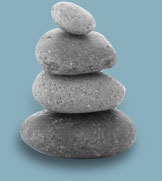Dana: The Practice of Generosity
Dana is the practice of developing the qualities of generosity, kindness, and letting go. We develop these qualities because they make fertile ground for liberating wisdom to grow deep in our hearts. Often our practice of generosity and kindness comes from our routine habitual tendencies, because it is the custom, through a feeling of guilt, or simply because it's the 'nice' thing to do. Taking the opportunity to make 'dana' a practice of awareness, brings it out of the realm of unconscious habit, and into the realm of wise attention. In this awareness practice of generosity, we begin to see how our lives can be elevated when we bring a conscious awareness around opportunities to be generous, to be kind, and to let go.
Because dana is a 'practice', with awareness and honesty we allow ourselves to experience how liberating and happiness-producing it feels to let go, and where it is painful because it is challenging to let go. We call dana a practice, and that implies that we are doing just that... practicing letting go. Which also implies that it is not easy to do sometimes. When we practice generosity, many supportive qualities of mind are being developed that lead us to ever-deepening happiness and freedom. We are cultivating loving kindness because we are caring for the welfare of others. We are cultivating compassion because we want to alleviate any suffering. We are cultivating the understanding of interconnectedness because we realize that we depend on the generosity and kindness of others, and they also depend upon ours. Most of all, we are cultivating non-attachment, the ability to let go, which is essential to understanding and experiencing freedom from suffering.
We must understand dana in terms of 'practice'. Dana is not a tip, nor is it in exchange for receiving the Teachings of the Buddha. It is a way in which we can express gratitude and practice our kindness, generosity and letting go with awareness. Dana is one of the Three Pillars of the Dharma. The other two are the cultivation of harmonious living (Sila), and the development of wisdom (Panna). During the time of the Buddha, and up to this time in Asian countries, the teachings begin with the cultivation of generosity, the first pillar of the dharma. But when the Teachings of the Buddha came to the West, the teaching of wisdom came first, without much emphasis on the two other foundational pillars (harmonious living and generosity). However, now many of us are beginning to see the importance of sharing the practice of dana and sila, otherwise those pillars will be a weak in our Western culture. It is important for all Three Pillars of the Dharma to support the continuation of the Teachings of the Buddha in the West in a strong and balanced way.
At the end of a retreat, there is an opportunity to practice dana towards those who have supported you in your practice. You may practice dana towards the teachers who have offered the teachings of the dharma and towards the retreat center staff, who practice the path of service through maintaining the dharma center and through directly supporting you while you are on retreat. The offering of all these activities is a practice of dana. The Buddha said, "The gift of the Dharma is the highest gift." We can't even put it in quantitative terms. When one considers how precious the Dharma is, one understands how priceless it is.
*This explanation of Dana, written by Kamala Masters and Steve Armstrong, will begin to open your awareness more fully around this integral part of the path of practice. Reprinted by permission from www.cloudmountain.org




